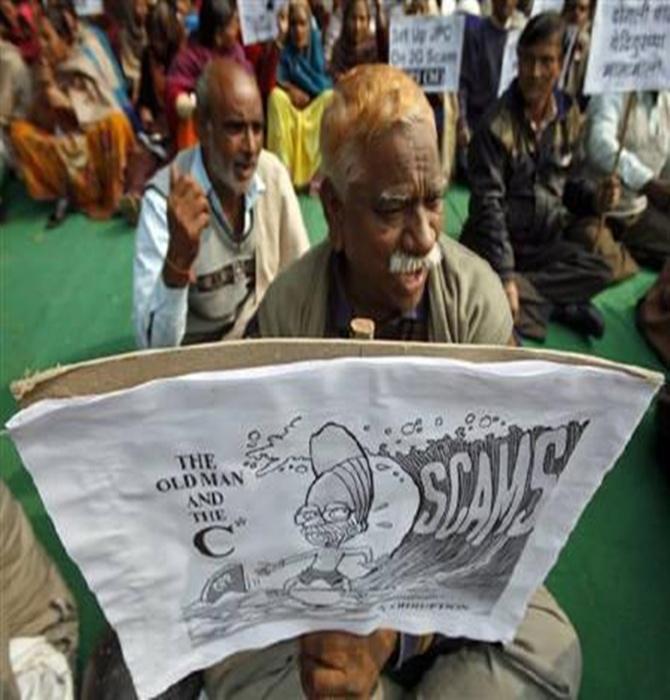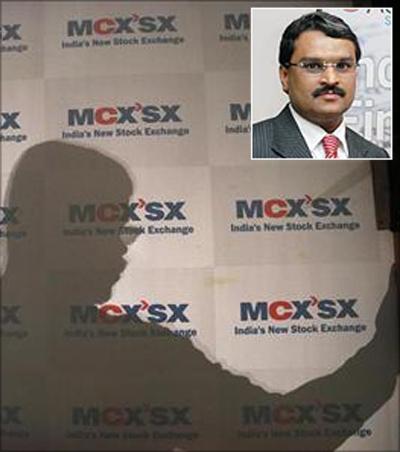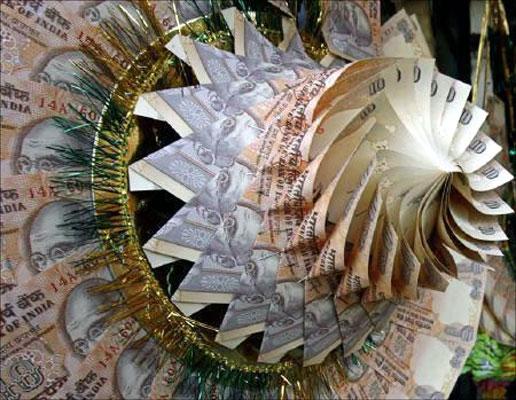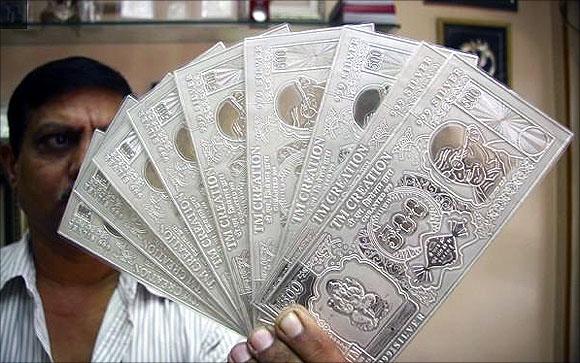 | « Back to article | Print this article |
In search of NSEL stock, a money puzzle unravels
Investigators going after the money trail in the NSEL case are finding less and less evidence of actual stock, notes N Sundaresha Subramanian
On August 6, 2013, the National Spot Exchange put out a list of goods in its warehouses that had been sold.
Unlike earlier, this one had the name of buyers against each item and their dues.
Two names that figured prominently in the list were those of Mohan India and its sister concern, Tavishi Enterprises.
Between them, Mohan and Tavishi owed the exchange Rs 952 crore (Rs 9.52 billion).
Click NEXT to read further. . .
In search of NSEL stock, a money puzzle unravels
Mohan India, which had bought 216,324 tonnes of sugar for Rs 605.2 crore (Rs 6.05 billion), is a company that is little known.
In 2011-12, the last year for which its financials are available, the company earned a net profit of Rs 2,044 on a revenue of Rs 72,400.
Tavishi, on the other hand, was born just a couple of months before the exchange collapsed under its own weight.
While Mohan India and Tavishi may have virtually nothing on their balance sheets, they have several heavyweights backing them.
The companies are promoted by an influential business family in north-west Delhi.
Jagmohan Garg, a director in Mohan India, is the man behind Merababa Reality projects.
Click NEXT to read further. . .
In search of NSEL stock, a money puzzle unravels
The company has several projects in Rohini and Pitampura in Delhi to its credit, including malls that go with the brand name D-MALL and a Radisson hotel in Paschim Vihar.
Family ties
Garg’s six brothers -- Madanmohan, Manmohan, Harimohan, Adarshmohan, Radheymohan and Shreemohan -- have board positions in the group. The brothers have Garg or Gupta as their surnames.
The family also runs a branch of the GD Goenka Public School in Rohini.
In a recent meeting, Jagmohan, a god-fearing man who believes in karma and rebirth, agreed that his group had borrowed money from the National Spot Exchange.
But, when asked if he had ever traded in sugar, he made it clear that there were no commodities involved.
“It was a five-year term loan at 21 per cent.”
He also said that he was ready to repay the dues, but he had problems with the amount demanded by the National Spot Exchange.
Click NEXT to read further. . .
In search of NSEL stock, a money puzzle unravels
According to him, he owes the exchange less than half the sum listed against his name.
The money was said to have been brought in by Jagmohan’s co-shareholder in Mohan India, Jaishankar Srivastava.
When questioned about how they were being financed by an exchange and the risks involved, Srivastava is believed to have said: “Paise andar laa raha hoon na. Bahar thodi le ke jaa raha hoon.
“I am bringing in money. Not taking it out. Why are you worried?”
That explains the big picture: the exchange entered into different arrangements with people with medium- to -large financial standings who were fund-starved and lured them to become its members in return for easy finance.
The whole thing worked something like this.
The National Spot Exchange took warehouses on rent at different locations and issued warehousing receipts.
Click NEXT to read further. . .
In search of NSEL stock, a money puzzle unravels
Extensive paperwork, including agreements with so-called members/farmers, were entered into by the exchange.
The warehouse managers so appointed by the exchange are said to have performed the functions of the exchange itself: they received stocks, certified quality and quantity of commodities, raised bills, challans, weighbridge receipts, freight receipts, etc.
A warehouse receipt would be issued in favour of the borrowing entity without entering any stock in the exchange-accredited warehouses.
These borrowers then sold these warehouse receipts on the exchange on the third day under T+2 contracts and took away the funds.
They kept the money rolling without ever having to deliver the stock.
They bought T+25 contracts and on the day the money was to be returned, they sold fresh T+2 contracts.
Click NEXT to read further. . .
In search of NSEL stock, a money puzzle unravels
Empty promises
As T+25 contracts always sold at a premium with return of 14-18 per cent annually, investors kept on rolling their trades, month after month. In essence, they bought the T+2 contracts and sold the T+25 contract.
There was no reason for them to smell a rat as the exchange was regularly issuing confirmations on warehouse receipt numbers, quality certificate numbers, warehouse locations, etc.
Furthermore, the exchange was also issuing letters confirming ownership of the stock with the investor and that the exchange was the custodian of such stocks until its delivery to the buyer of the T+25 contracts.
If the investor grew suspicious, then the warehouse managers took them to a warehouse where goods were actually stored.
Click NEXT to read further. . .
In search of NSEL stock, a money puzzle unravels
While the investor could cross-check his own exposure, he had no means to check if the same goods were being shown to other investors as well.
He also had no idea of the total position on the exchange for a particular stock.
Everyone was happy. Investors were promised 14-18 per cent returns on their investments, the borrowers got easy loans of 2-5 years maturity at a rate of 18-24 per cent, and the masterminds pocketed a difference of 4-10 per cent.
Income tax officials who raided the so-called warehouses and inspected the books of the 24 entities have pointed to this.
In Mohan India’s case, Srivastava and National Spot Exchange Business Development Executive Amit Mukherjee are said to have devised the entire structure of how the money would be routed and entries made in the books of both the National Spot Exchange and the so-called farmer/processor entities.
Mukherjee was one of the six officials removed by the exchange alongwith Managing Director & Chief Executive Anjani Sinha last month.
Click NEXT to read further. . .
In search of NSEL stock, a money puzzle unravels
Another person named Behari Lal is said to have played a key role in managing the so-called warehouse system.
When contacted, Mukherjee says: “My own company is trying to frame me. Both investors and borrowers are adding to it. I was only doing a marketing job. But, I am being made the scapegoat now.”
According to Mukherjee, he was only marketing an investment product from the exchange, and Mohan India had availed the facility for six-seven months.
The money received by Mohan India was then moved through several entities such as Genius Promoters (Rs 124 crore or Rs 1.24 billion), Ramswarup and Sons (Rs 75 crore or Rs 750 million), Ramya Infrastructure, Anuj Traders, Shree Raghav Trading, Vishnu Trading and NekiRam Vijay Kumar. Shrivastav himself received about Rs 50 crore (Rs 500 million), according to the records accessed by investigators who are going after the money trail.
Click NEXT to read further. . .
In search of NSEL stock, a money puzzle unravels
These investigators have also found several demand drafts issued by Mohan India to unknown entities.
When contacted by Business Standard, Jagmohan Garg termed the allegations of default as ‘rubbish’ and said he ‘would talk to the exchange in court.’
He declined to answer any further queries by Business Standard.
Easy money
The borrowers may have used the funds to grow their respective businesses or may have invested in other assets.
However, agencies such as the Enforcement Directorate are also investigating whether there were schemes which used the names of these shell companies as borrowers for a one-time fee of 4-8 per cent and then routed the money to the exchange’s owners.
Click NEXT to read further. . .
In search of NSEL stock, a money puzzle unravels
Visits made by Business Standard to several borrowers in Ludhiana, Panchkula, Delhi, Mumbai, Ahmedabad and Hyderabad found that several borrowing entities have links to real estate.
ARK Imports’ promoters Kailash and Anubhav Aggarwal, who had bought Rs 800 crore (Rs 8 billion) worth of raw wool, have invested in large tracts of land in and around Ludhiana.
Some of them also had past associations with the Financial Technologies group. Gagan Suri of Ambala is the brother of a National Dairy Development Board official.
Financial Technologies and the National Dairy Development Board had promoted a joint venture called Safal Exchange which was aborted a few years ago.










